Evolutionary Ecology
The department of Evolutionary Ecology gathers complementary skills in behavioural ecology, population dynamics, population biology, community ecology, and methodology (statistics and modelling). The research done in the department aims at studying how animal species evolve in a changing world by understanding the causes of the evolution of traits, adaptations and interactions. For that, we consider different levels of organization from individuals to populations and communities. Because organisms cannot be considered isolated from other biotic factors, we consider pathogens but also competing species within communities.
We study how individuals adapt to their environments that are largely impacted by anthropic pressures, and how life history traits and behaviour evolve in response to these pressures. Although we mainly focus on phenotype, we more and more consider the mechanistic link between the genotype and the phenotype. We develop the theoretical framework of our discipline through a conceptual and modeling approach. In parallel, we test hypotheses that arise from theoretical predictions through experimental, comparative and observational approaches on different biological models (insects, birds, mammals). Experimental approaches are developed in the laboratory (insect model) and in natura (bird, insect and mammal models). Observational and comparative research is mainly concerned with vertebrates. Our approaches are also, and increasingly, interested in the mechanisms of adaptive responses. In addition to the classical approaches of demographic analysis and trait change, methods of ecophysiology, chemical ecology and molecular biology are used.
Our department hosts several long-term studies of wild populations of different species. These long-term studies offer a valuable way to understand how biotic and abiotic factors affect individuals’ life history traits, and the functioning of populations in natura. Five populations of mammalian species are thus monitored for several years (more than 40 years on roe deer, 30 on Alpine marmots, 25 years on cats, 16 years on zebras, and 20 years on impala). Two of our study sites (La Sassière in Vanoise National Park (Alpine marmots) and Hwange National Park) have been certified as “Site d’Etude en Ecologie Globale” (SEEG), and two (ZA “Hwange” and ZA “Antarctic and sub-Antarctic”) were certified as “Zone Atelier” by the CNRS.
The department of Evolutionary ecology is also largely involved in training activities. Lastly, we also have strong socio-economic relationships. Indeed, because we address questions of major societal interest (global warming, public health) we tightly collaborate with socio-economic partners (Office Français de la Biodiversité, Vanoise National Park, Hwange National Park in Zimbabwe, Office National des Forêts, etc.) and participate to general public and media events.
Publications
Display of 1561 to 1590 publications on 2483 in total
Fuelling flight in a parasitic wasp: which energetic substrate to use?
Ecological Entomology . 37 ( 6 ) : 480-489
Journal article
see the publicationEnvironmental factors associated with the seroprevalence of Toxoplasma gondii in Wild Boars (Sus scrofa), France
EcoHealth . 9 ( 3 ) : 303-9
Journal article
see the publicationImmune phenotype and body condition in roe deer: individuals with high body condition have different, not stronger immunity.
PLoS ONE . 7 ( 9 ) : e45576
Journal article
see the publicationThe Harttiini (Siluriformes, Loricariidae) from the Guianas: a multi-table approach to assess their diversity, evolution, and distribution
Cybium : Revue Internationale d’Ichtyologie . 36 ( 1 ) : 115-161
Journal article
see the publicationPaleogenetic Analyses Reveal Unsuspected Phylogenetic Affinities between Mice and the Extinct Malpaisomys insularis, an Endemic Rodent of the Canaries
PLoS ONE . 7 ( 2 ) : e31123
Journal article
see the publicationTrue versus false parasite interactions: a robust method to take risk factors into account and its application to feline viruses.
PLoS ONE . 7 ( 1 ) : e29618
Journal article
see the publicationCommunity ecology in the age of multivariate multiscale spatial analysis
Ecological monographs . 82 ( 3 ) : 257 - 275
DOI: 10.1890/11-1183.1
Journal article
see the publicationTowards a renewed research agenda in ecotoxicology
Environmental Pollution . 160 ( 1 ) : 201-206
Journal article
see the publicationEquation or algorithm: differences and choosing between them
Acta Biotheoretica . 59 ( 1 ) : 67-79
Journal article
see the publicationHow does herbivory affect individuals and populations of the perennial herb Paeonia officinalis ?
Flora . 206 ( 6 ) : 544-549
Journal article
see the publicationCaged gammarids to improve the characterization of contamination levels in continental waters - toward the determination of threshold values
EMEC ( European Meeting on Environmental Chemistry) 12th . : 1
Poster
see the publicationTransfer of PCB from sediment to biota: development of a bioaccumulation model in a risk assessment perspective
SETAC Europe 21st Annual Meeting . : 2
Conference paper
see the publicationEffet des substances chimiques sur les organismes aquatiques. Développement d’une batterie multi spécifique pour l’évaluation écotoxicologique de la qualité du milieu
: 93
Report
see the publicationTransferts de contaminants hydrophobes du sédiment au biote : construction de modèles dans une perspective de gestion
: 186
Report
see the publicationContamination des poissons d'eau douce par les PCB et d'autres contaminants persistants dans le bassin Rhône-Méditerranée. Détermination de facteurs d'accumulation sédiments-poissons et d'une valeur seuil dans le sédiment au-delà de laquelle les po
: 84
Report
see the publicationContinental-scale patterns of Cecropia reproductive phenology: evidence from herbarium specimens
Proceedings of the Royal Society B: Biological Sciences . 278 ( 1717 ) : 2437-2445
Journal article
see the publicationLarge trends in French topsoil characteristics are revealed by spatially constrained multivariate analysis
Geoderma . 161 : 107-114
Journal article
see the publicationDiversity, Geographic Distribution, and Habitat-Specific Variations of Microbiota in Natural Populations of the Chicken Mite, Dermanyssus gallinae
Journal of Medical Entomology . 48 ( 4 ) : 788-796
DOI: 10.1603/ME10113
Journal article
see the publicationNurse shrubs increased the early growth of Cupressus seedling by enhancing belowground mutualism ans doil microbial activity
Soil Biology and Biochemistry . 43 ( 10 ) : 2160-2168
Journal article
see the publicationMesure du taux d'alimentation in situ avec Gammarus fossarum (Crustacé) : un outil écologiquement pertinent pour l'évaluation de la qualité chimique des milieux aquatiques
Colloque de la SEFA . : 22
Conference paper
see the publicationPopulation models in Gammarus (Crustacean) and Potamopyrgus (Gastropod): depicting the seasonal variability in demographic sensitivities to toxic stress by sensitivity analysis
SETAC Europe 21st Annual Meeting . : 1
Poster
see the publicationIn situ feeding assay with Gammarus fossarum: move forward to an ecologically relevant biomonitoring of water chemical quality
SETAC Europe 21st Annual Meeting . : 21
Conference paper
see the publicationLes mathématiques au secours de la faune aquatique
Rhône-Alpes et l'environnement : 100 questions pour la recherche . : 124-125
Book chapter
see the publicationWhen cats' ways of life interact with their viruses: A study in 15 natural populations of owned and unowned cats \textitFelis silvestris catus
Preventive veterinary medicine . 101 : 250-264
Journal article
see the publicationNatal dispersal of European hare in a high-density population
Mammalian Biology: Zeitschrift für Säugetierkunde . 76 : 148-156
Journal article
see the publicationThe predictive value of the maximum likelihood estimator of the number of contributors to a DNA mixture
Forensic Science International: Genetics . 5 : 281-284
Journal article
see the publicationMolecular Variability and Evolution of the Pectate Lyase (pel-2) Parasitism Gene in Cyst Nematodes Parasitizing Different Solanaceous Plants
Journal of Molecular Evolution . 72 ( 2 ) : 169-181
Journal article
see the publicationConséquences démographiques des Effets Allee comportementaux dans les systèmes hôte-parasitoïde
Entomological Society of America, Canada and British Columbia joint annual meeting .
Conference paper
see the publicationBiogeographical patterns of soil molecular microbial biomass as influenced by soil characteristics and management
Global Ecology and Biogeography . 20 : 641-652
Journal article
see the publicationSIMULTANEOUS ANALYSIS OF A SEQUENCE OF PAIRED ECOLOGICAL TABLES: A COMPARISON OF SEVERAL METHODS
Annals of Applied Statistics . 5 ( 4 ) : 2300-2325
DOI: 10.1214/10-AOAS372
Journal article
see the publication
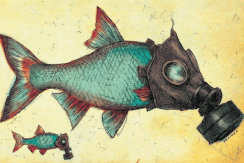
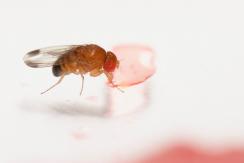
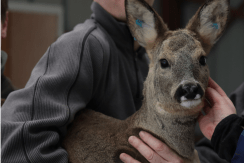
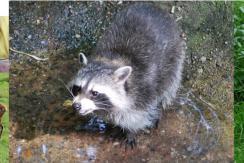
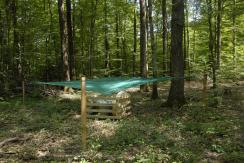
You also, comment on this article